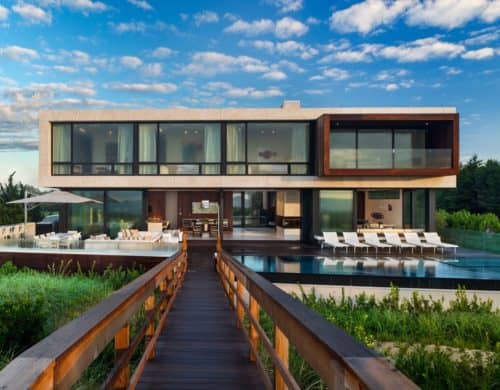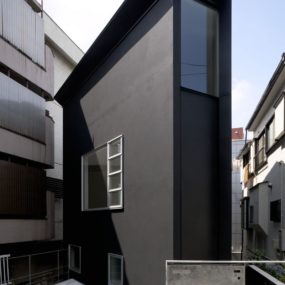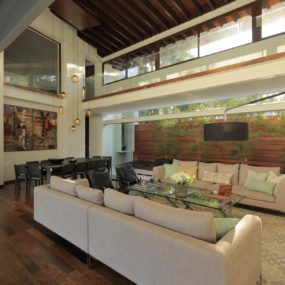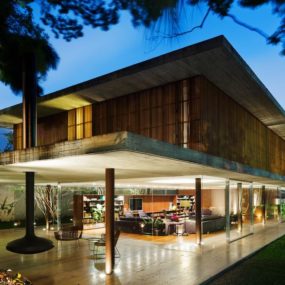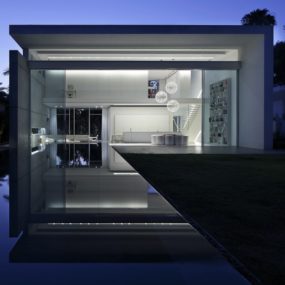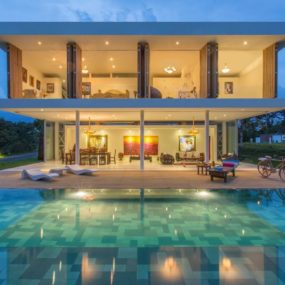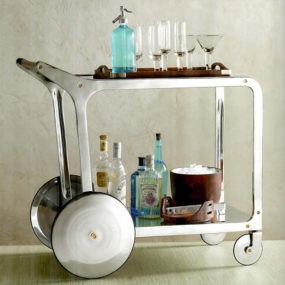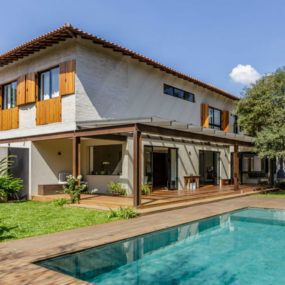Located in the mountainous ski country of Whistler, BC, Canada, Hadaway House is positioned on a northwest slope overlooking a panoramic vista of Whistler valley. The facade of the home presents a unique faceted profile that came about by the local restrictions on a home’s footprint and height, as well as the need for the home to shed snow from the roof into defined storage areas on the site.

Hadaway House design presents a unique exterior, almost spaceship like in aesthetic. The building code for a footprint size was met by folding the home’s profile into a narrow base. The entire home is clad with open spaced 2.6 ipe boards, installed on angles to exaggerate the angles of the home.
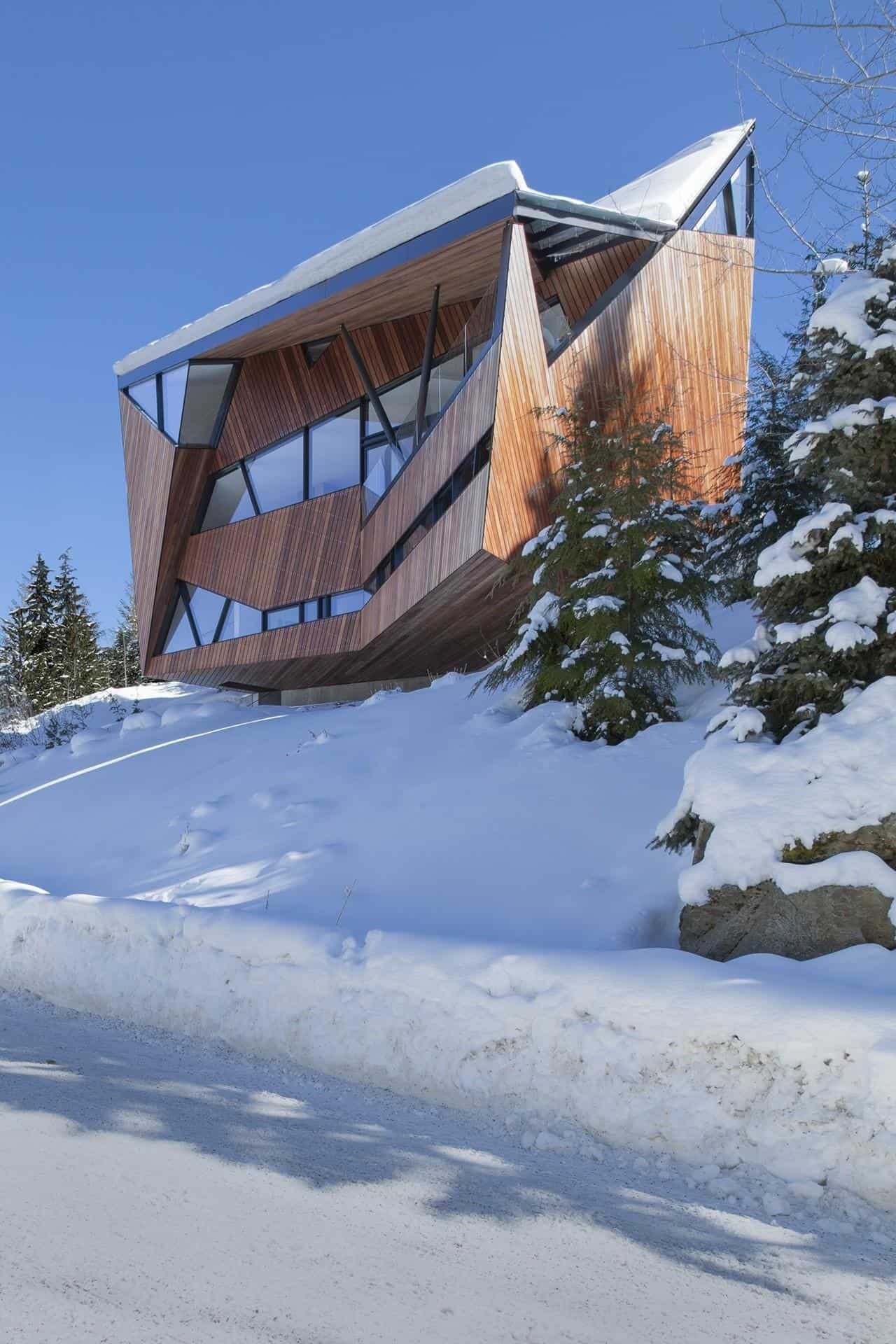
Adding to the angles of the home are the deliberately unsquare voids, windows and angled steel support posts.
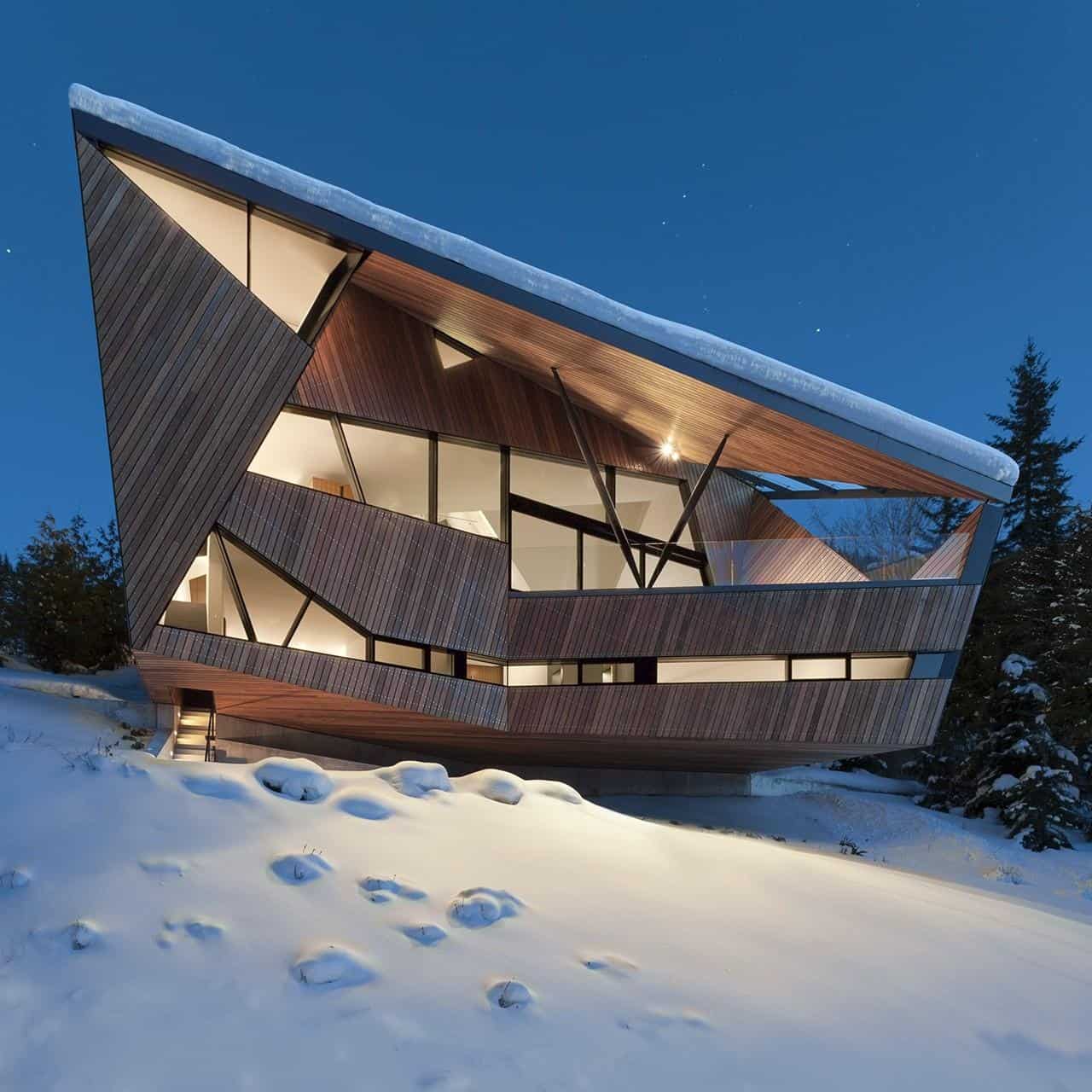
Stairs lead up to the back door, which from a distance looks like a hatch in a ship – maybe a space ship? These stairs connect the lower level to an outdoor patio below the house. It is the only level ground on the steep site other than that at the main entrance.
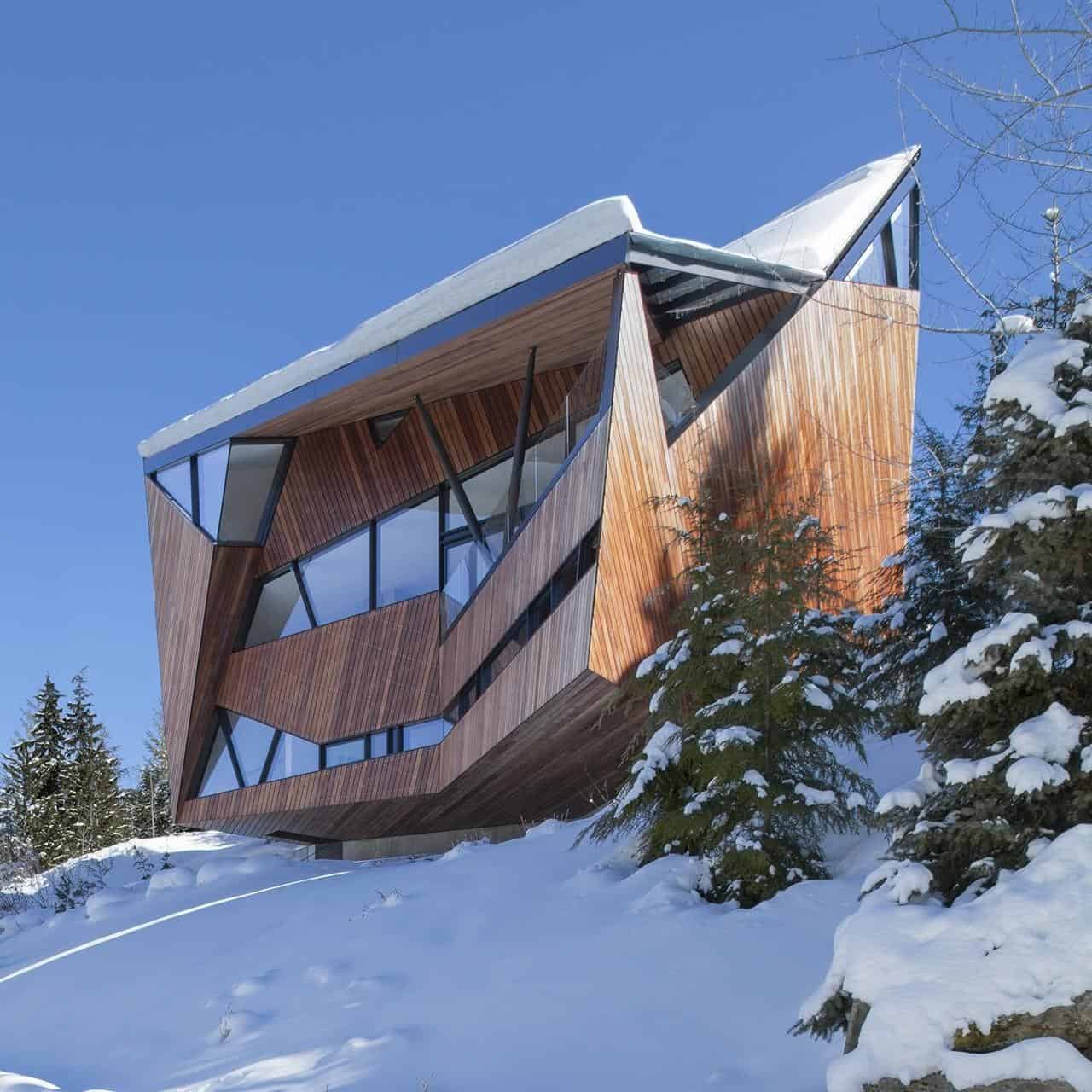
An reverse pitch to the roof acts as a funnel to direct the snow fall away from the exterior pathways.

A vertical crevice of space runs under the highest roof ridge, bisecting the faceted volume to bring light into the deepest part of the home.
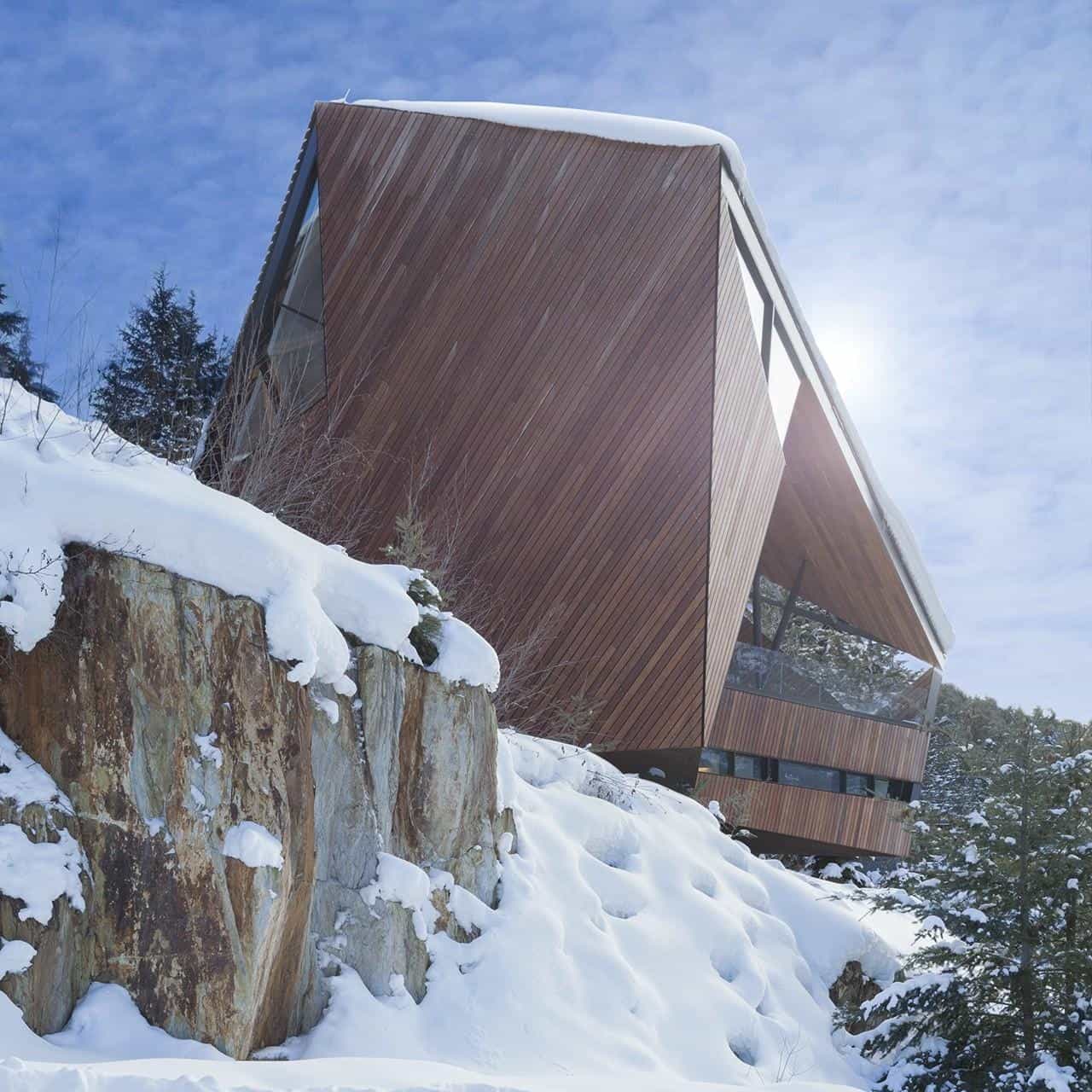
A large boulder on the site is striated similarly to the ipe board cladding on Hadaway House.
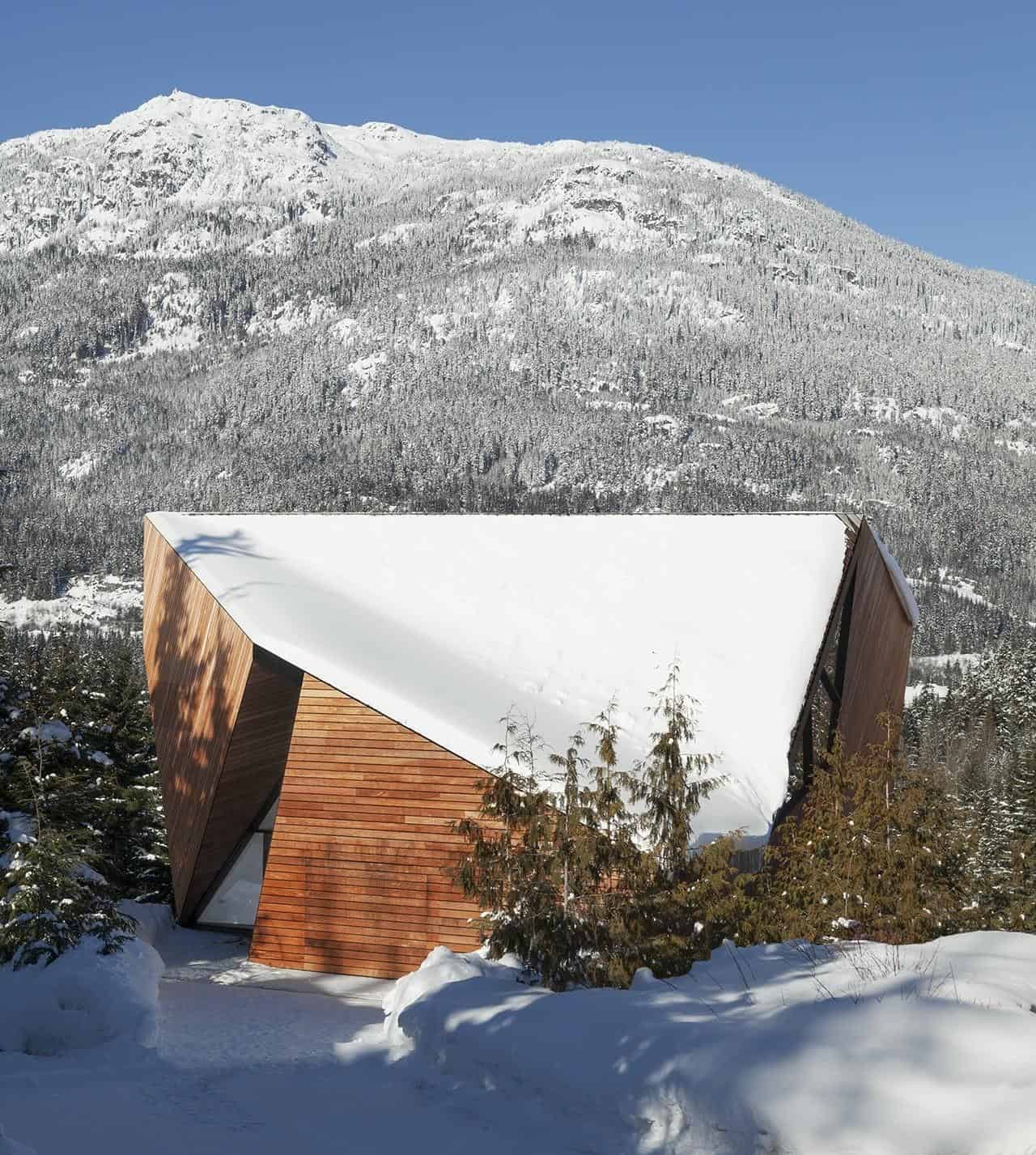
The main entrance is located on the high side of the site, away from where the roof snow is funneled.
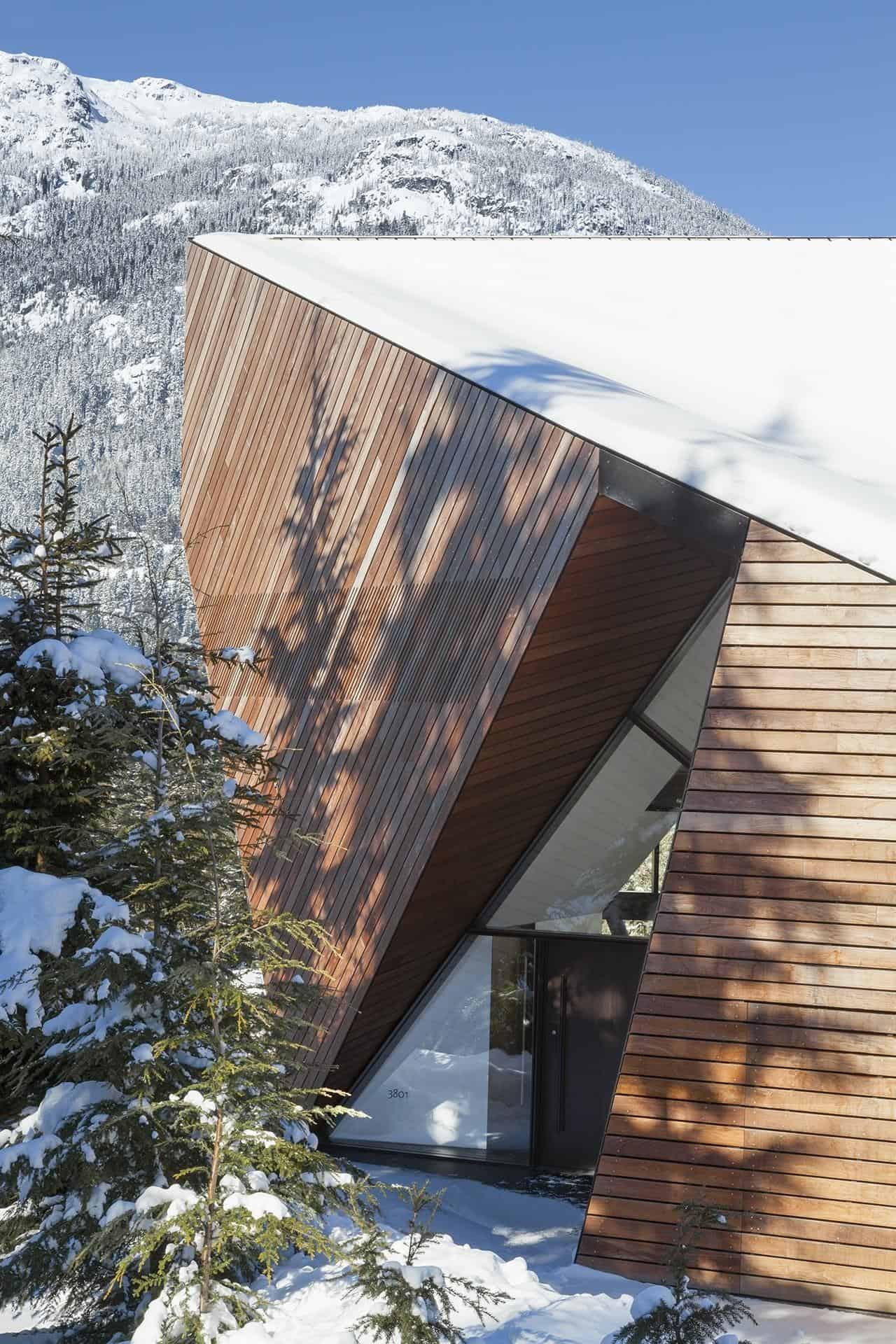
The site is wedge shaped with the narrowest side facing the street, creating just enough room for a garage and the narrow entrance.

The foyer leads to the dining area with the kitchen on one side and a sunken living room on the other, and the living room opens up to an outdoor terrace overlooking Whistler valley.
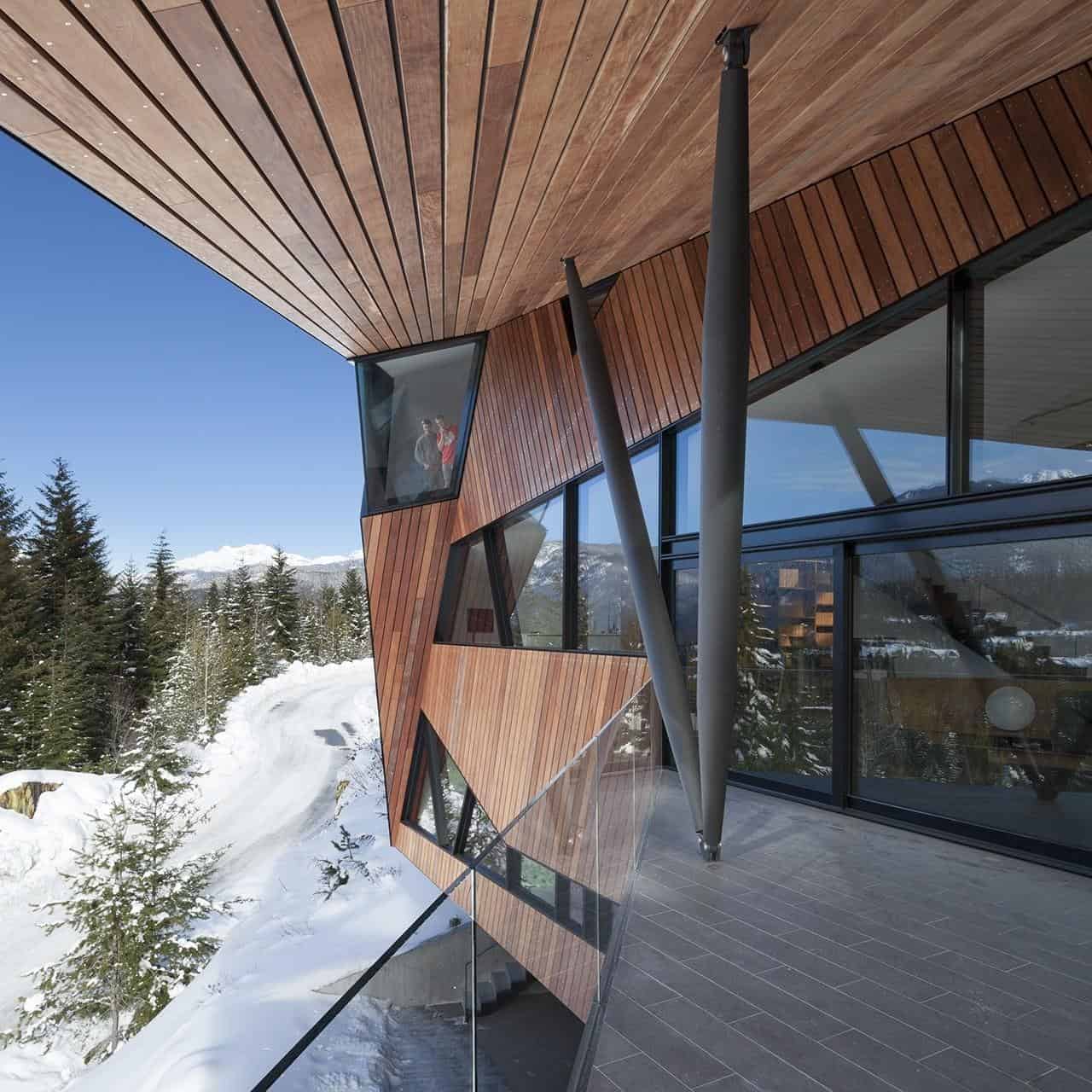
The terrace includes the unusual design of bulbous steel posts installed on angles to support the weight of a snow covered roof overhang.
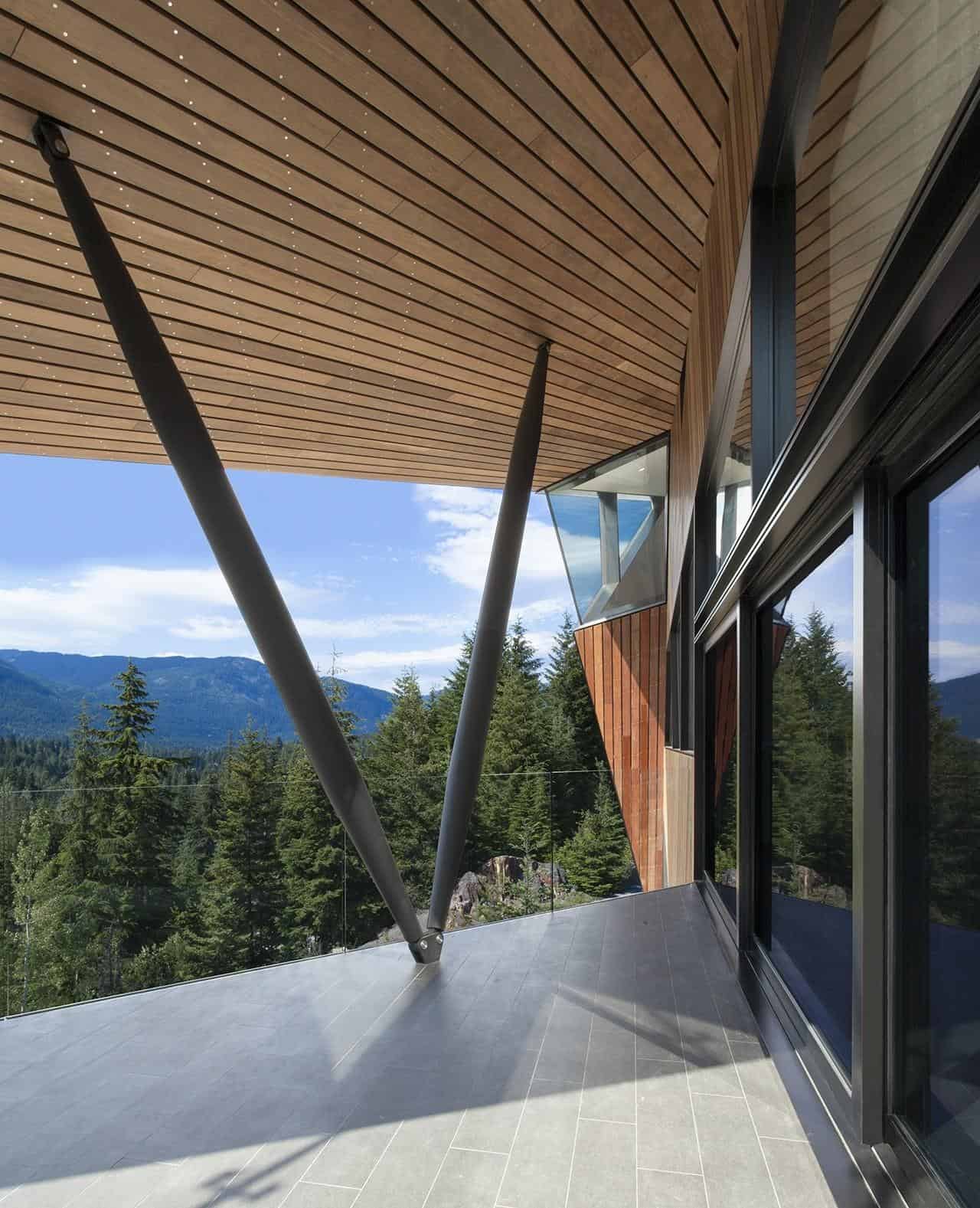
During the summer, the roof overhang provides the necessary shade from the heat of the sun.
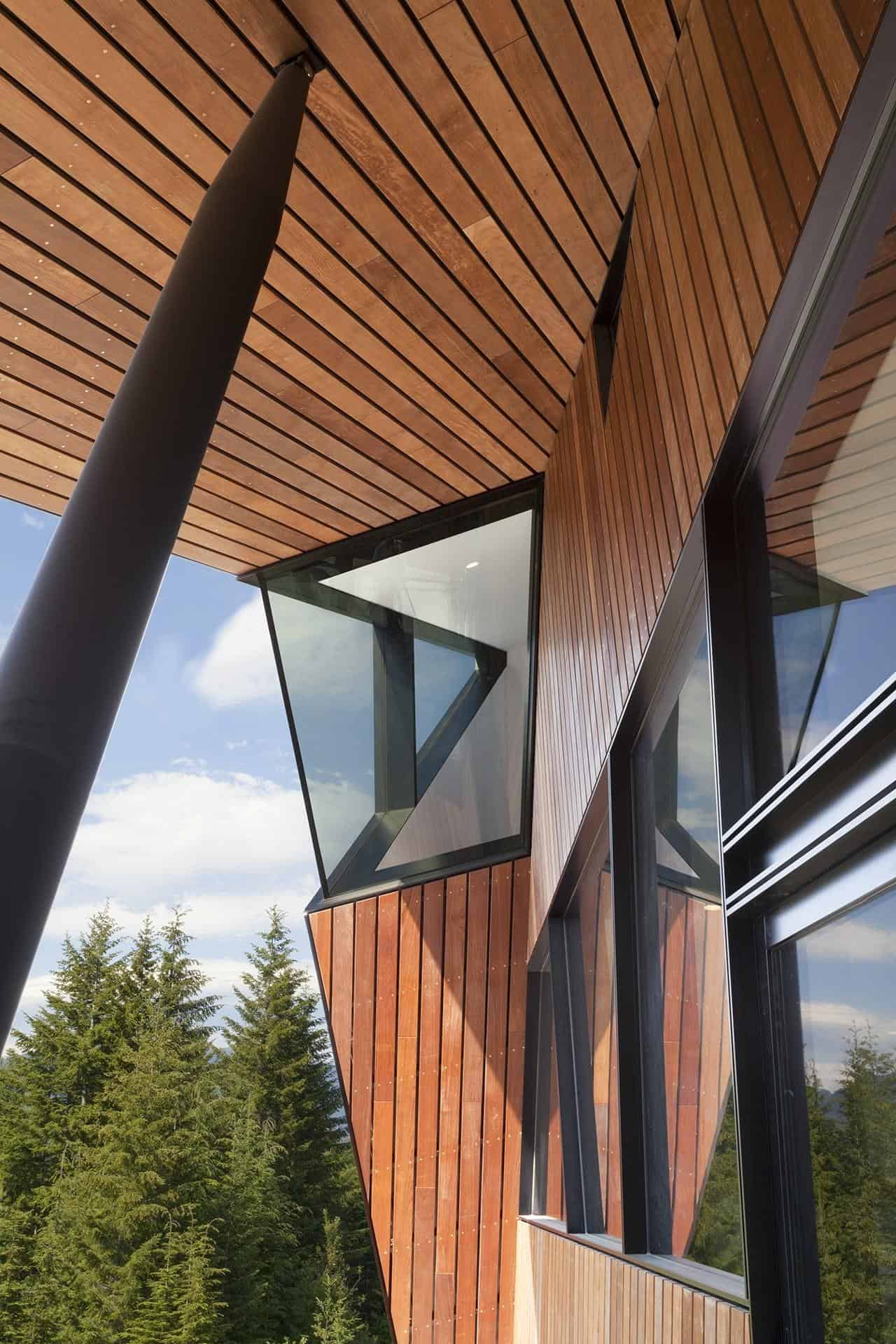
The architecture, when reduced to sections of intricacy, presents itself like an abstract sculptural installation – all in rhythmic balance and all in harmony.
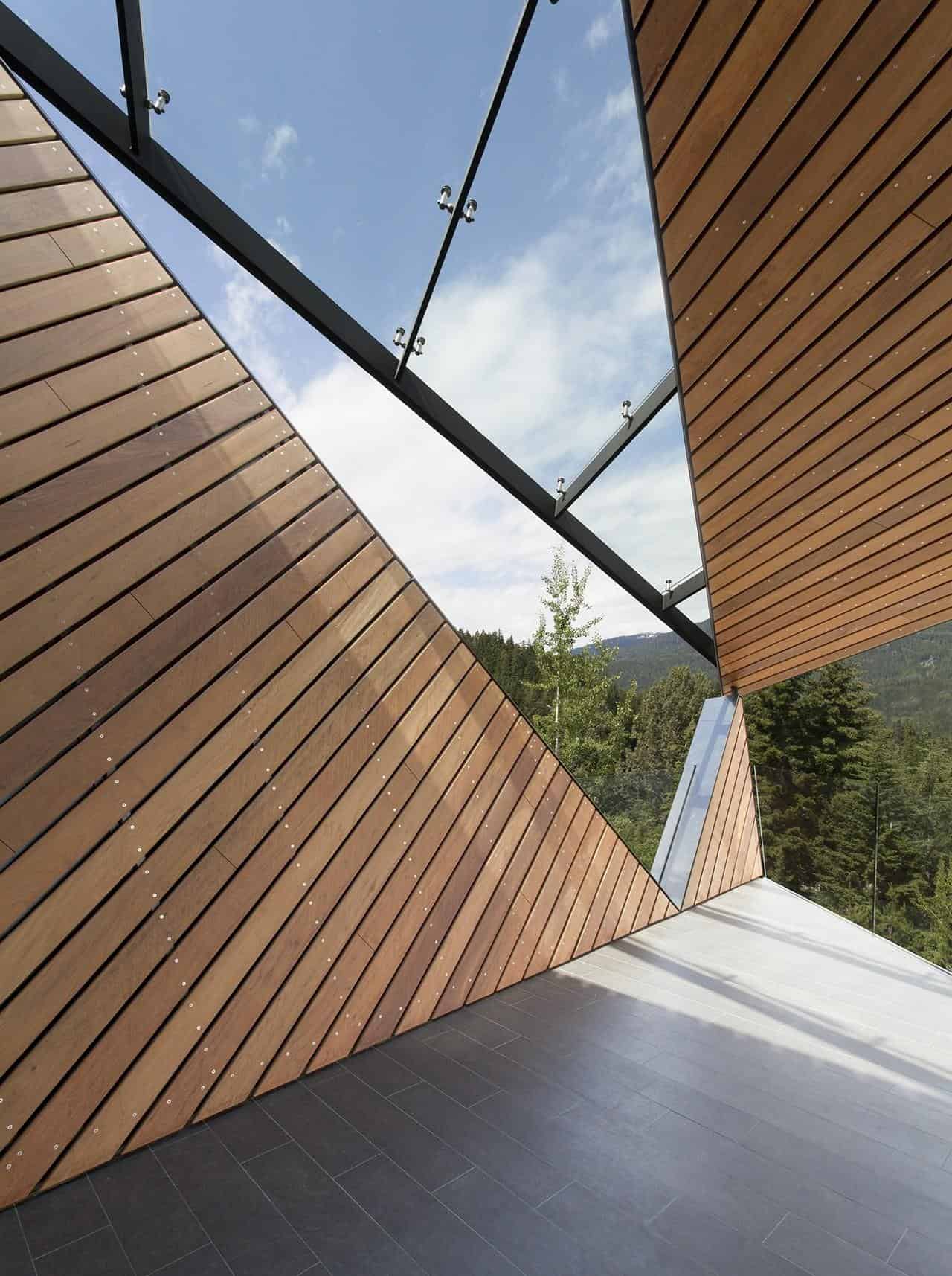
Even on the terrace voids in the solid structure where created to allow sunlight to pass through during the winter season.
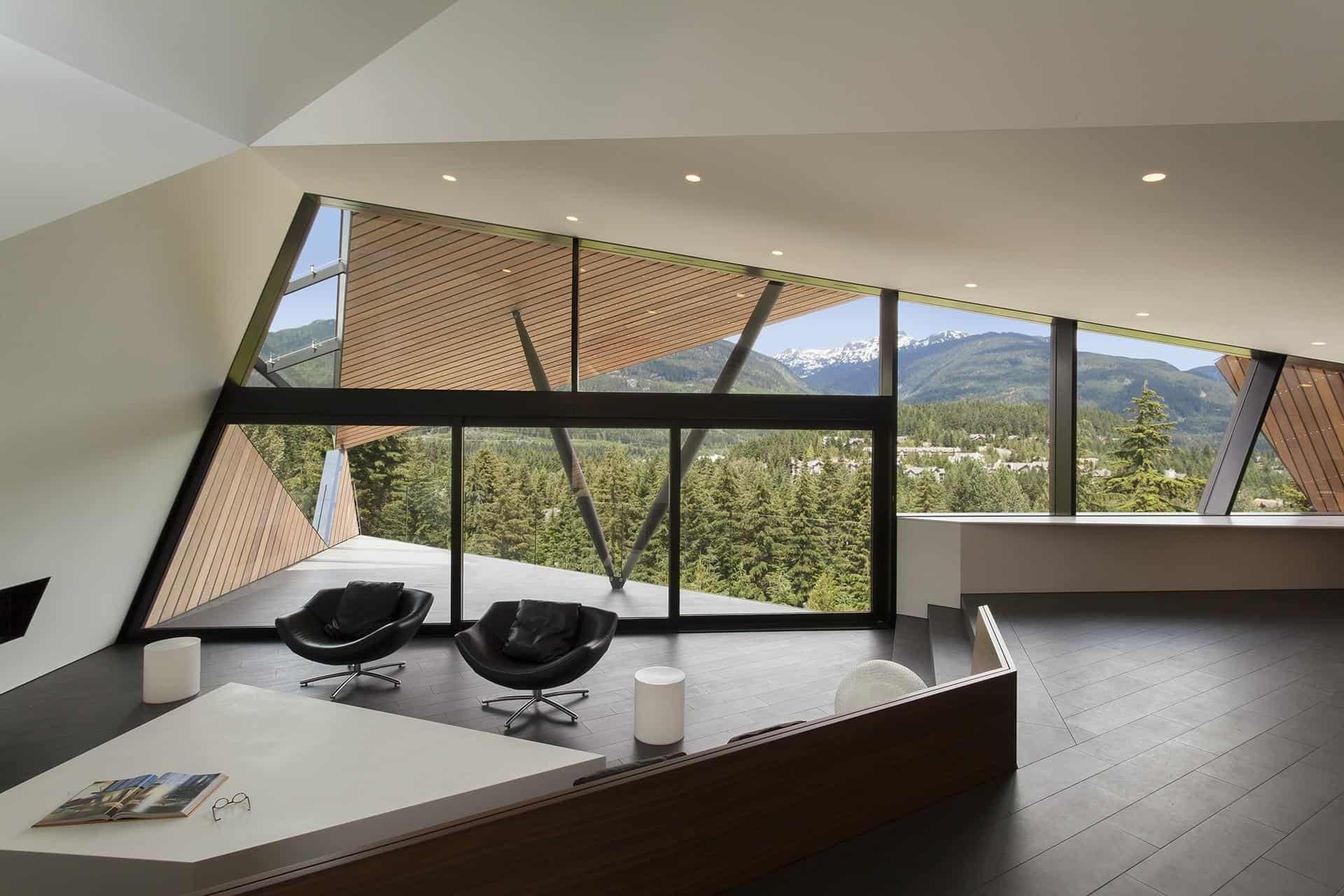
Complimenting the angles of the terrace is a large quadrilateral coffee table.
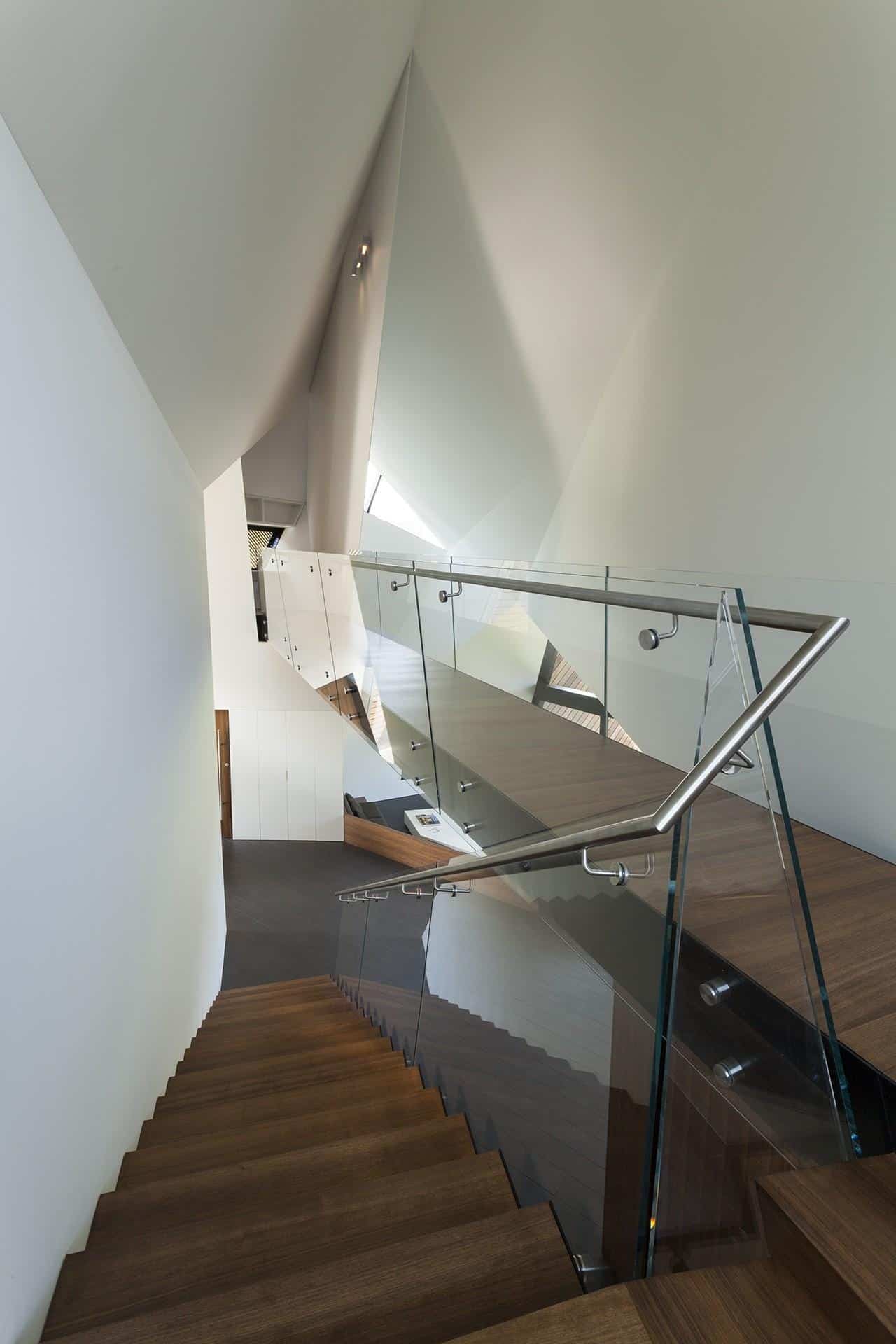
Behind the living room and just off the foyer, a stairwell leads to the master suite and to a bridged walkway that continues on to the home office.
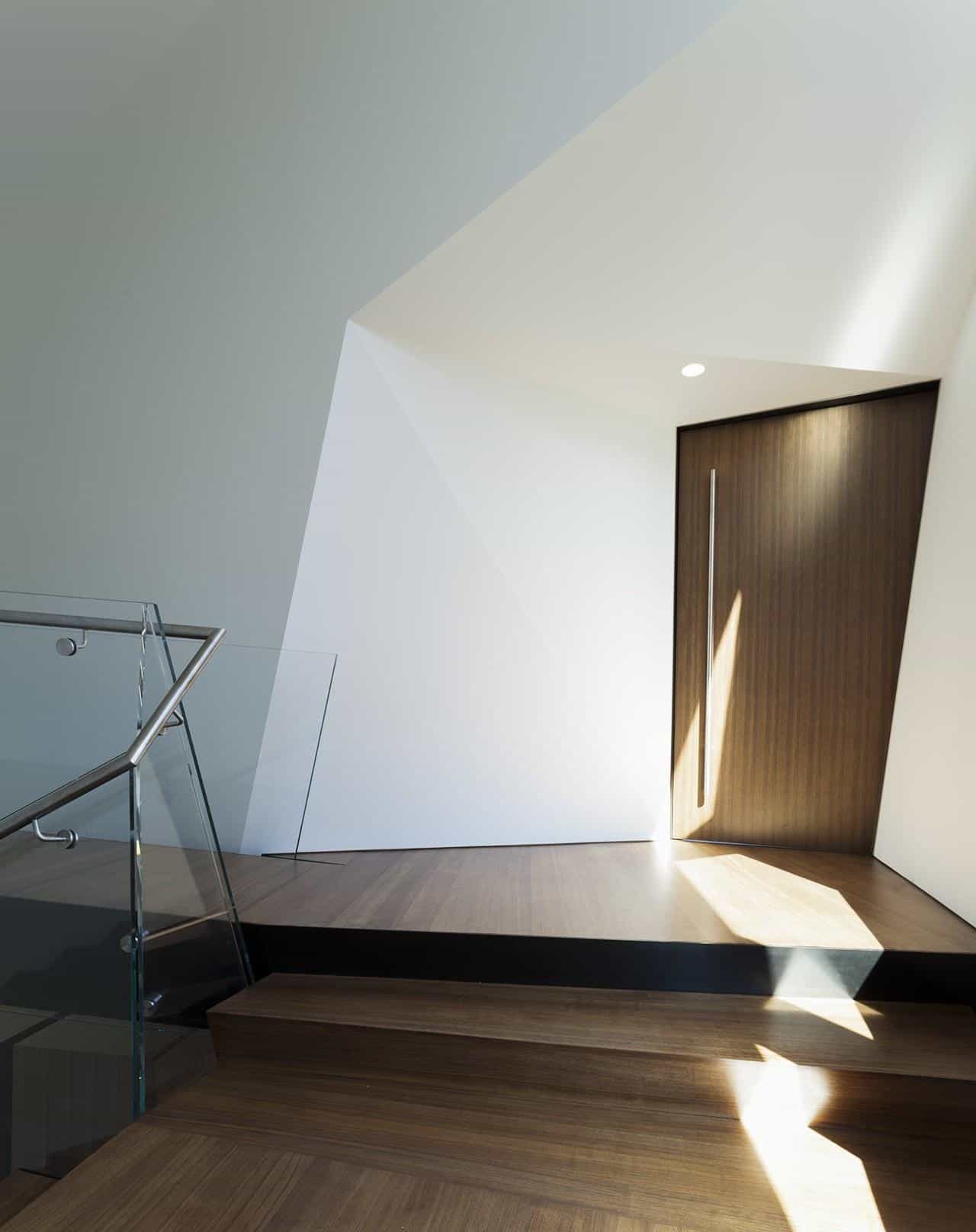
Even the entry to the master suite is faceted.
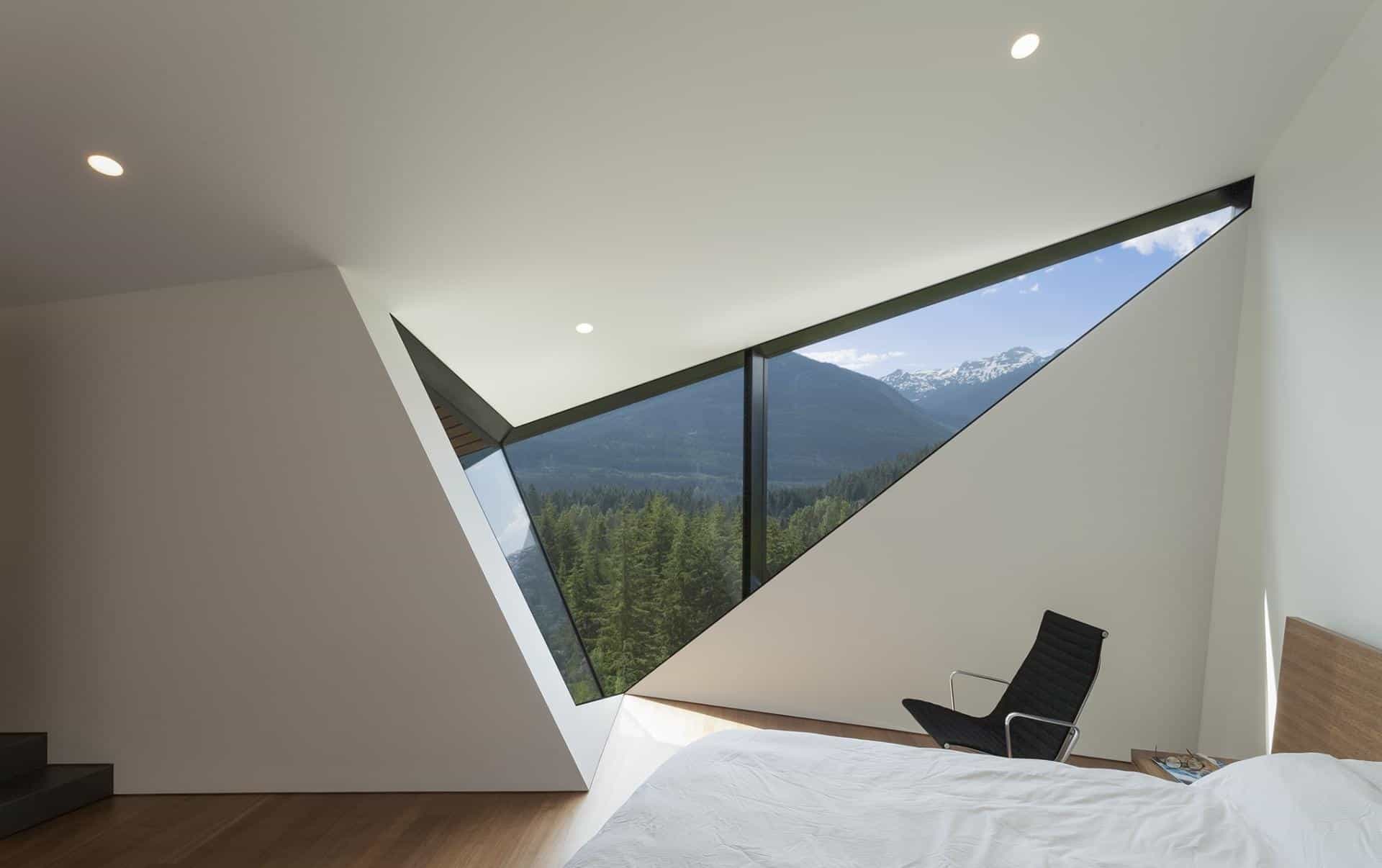
The master suite enjoys its own unusually shaped windows and walls. It also has a short flight of 3 stairs that leads to a large ensuite.
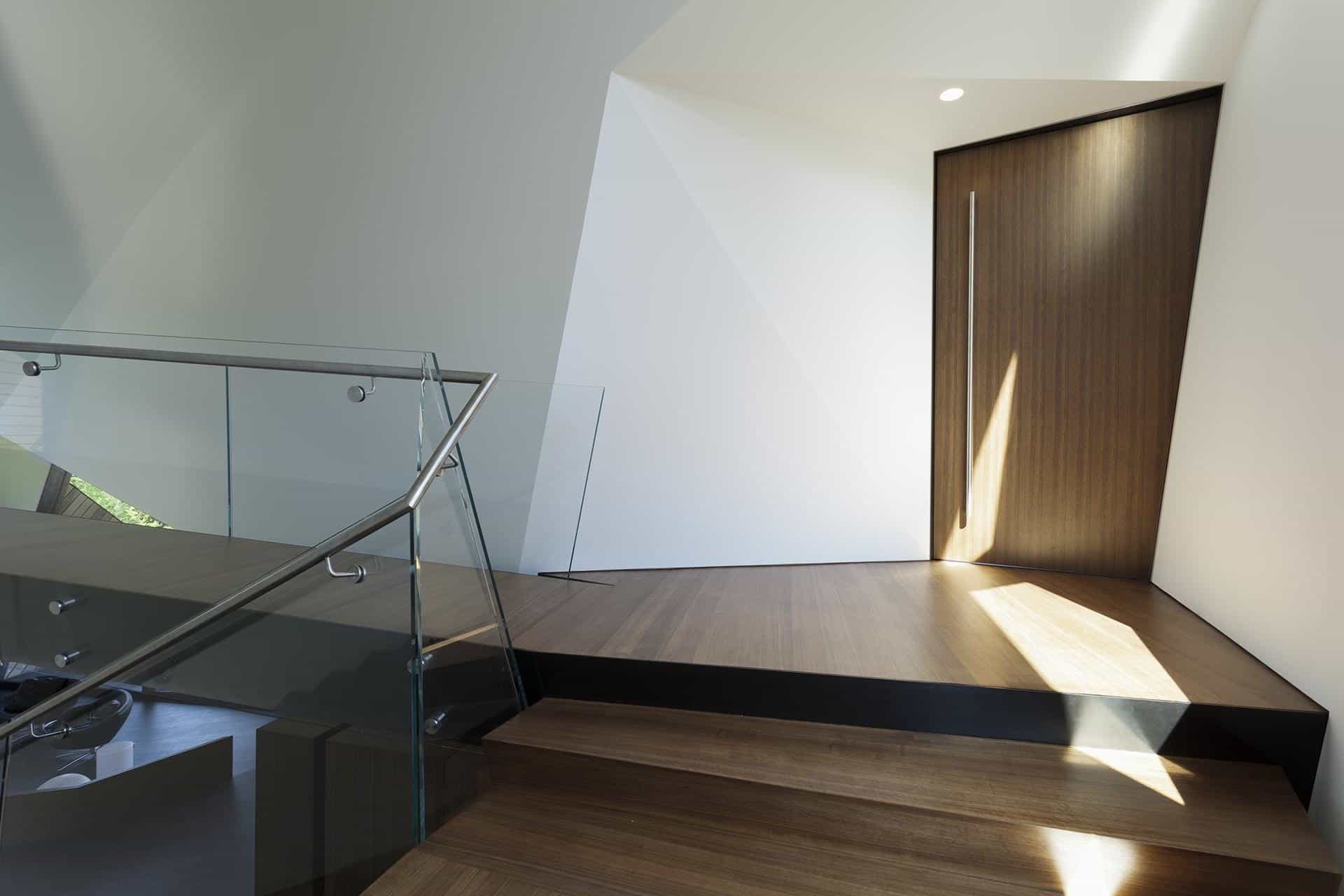
Outside the master suite, the bridged walkway leads down a hall to the home office.
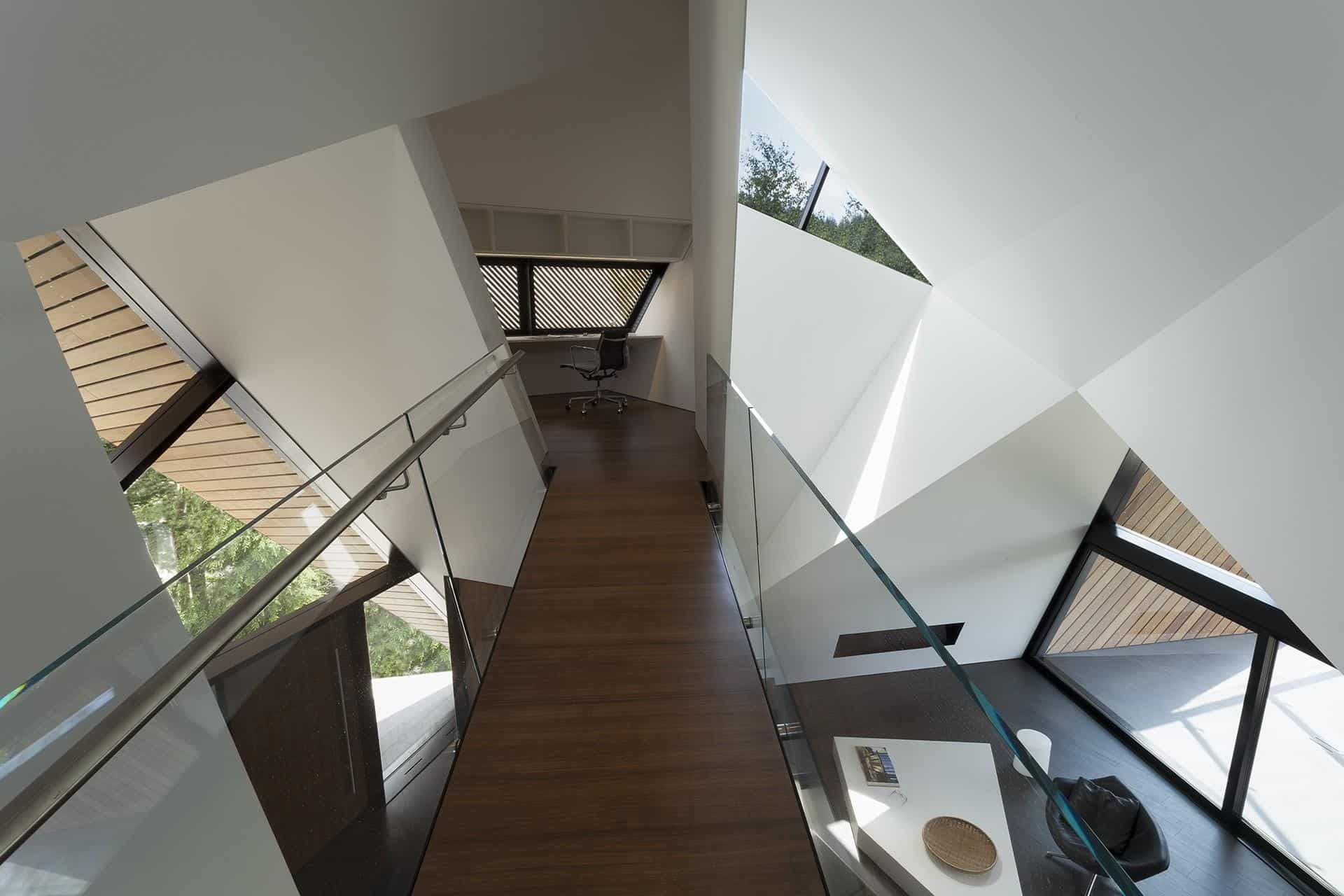
The bridged walkway overlooks the living room on one side and the entry way on the other.
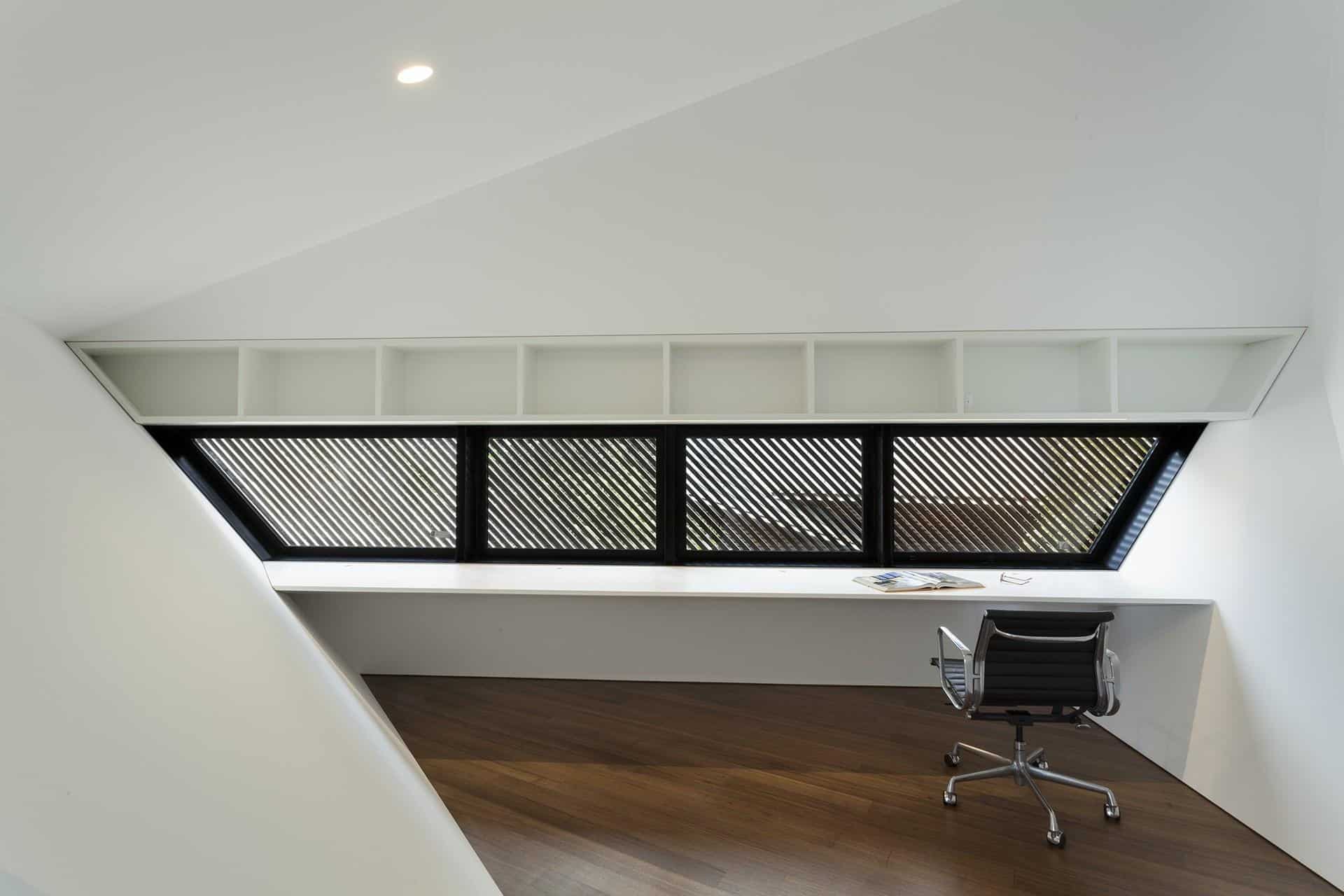
The office boasts a work table that runs the length of the window wall and has inset shelving above the windows.
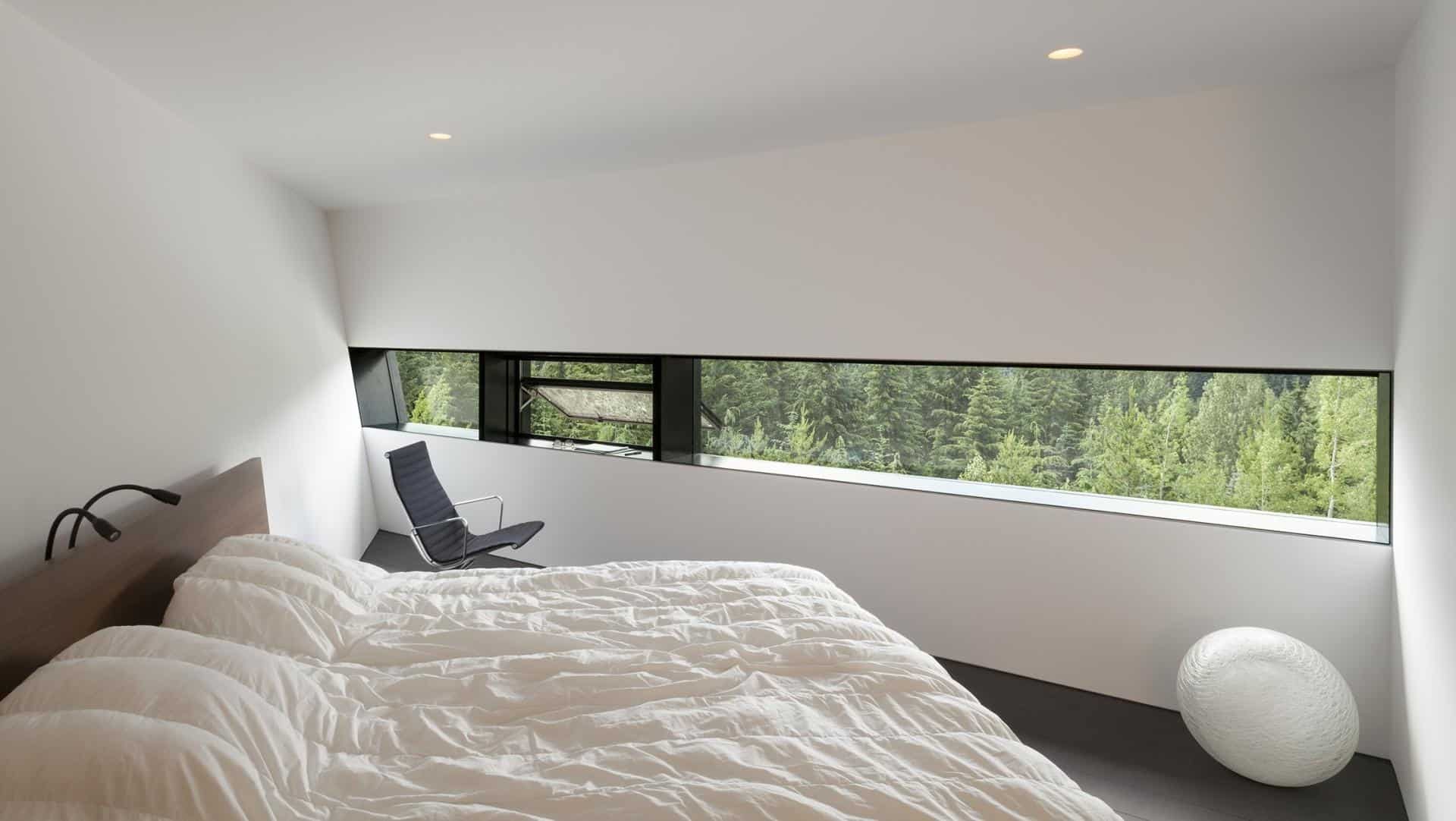
There are also two guest bedrooms on the lower level as well as a second living area and a large service space.
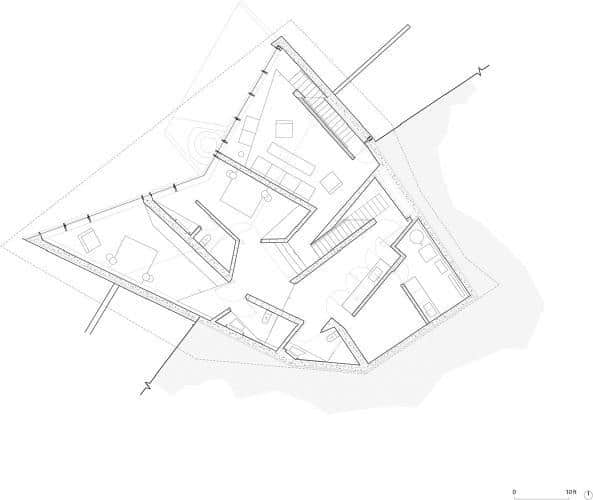
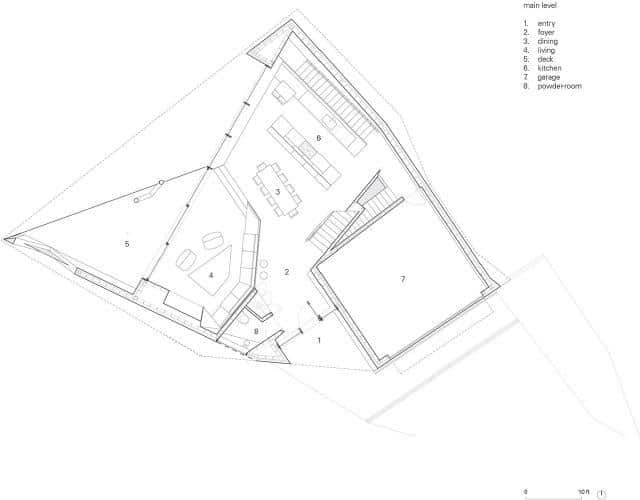
The main level plan.
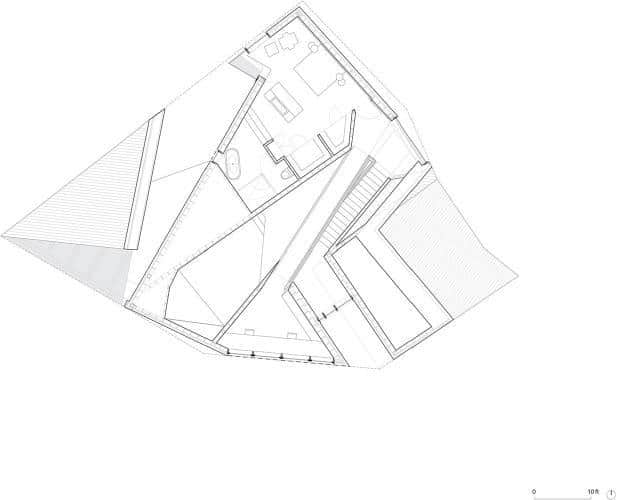
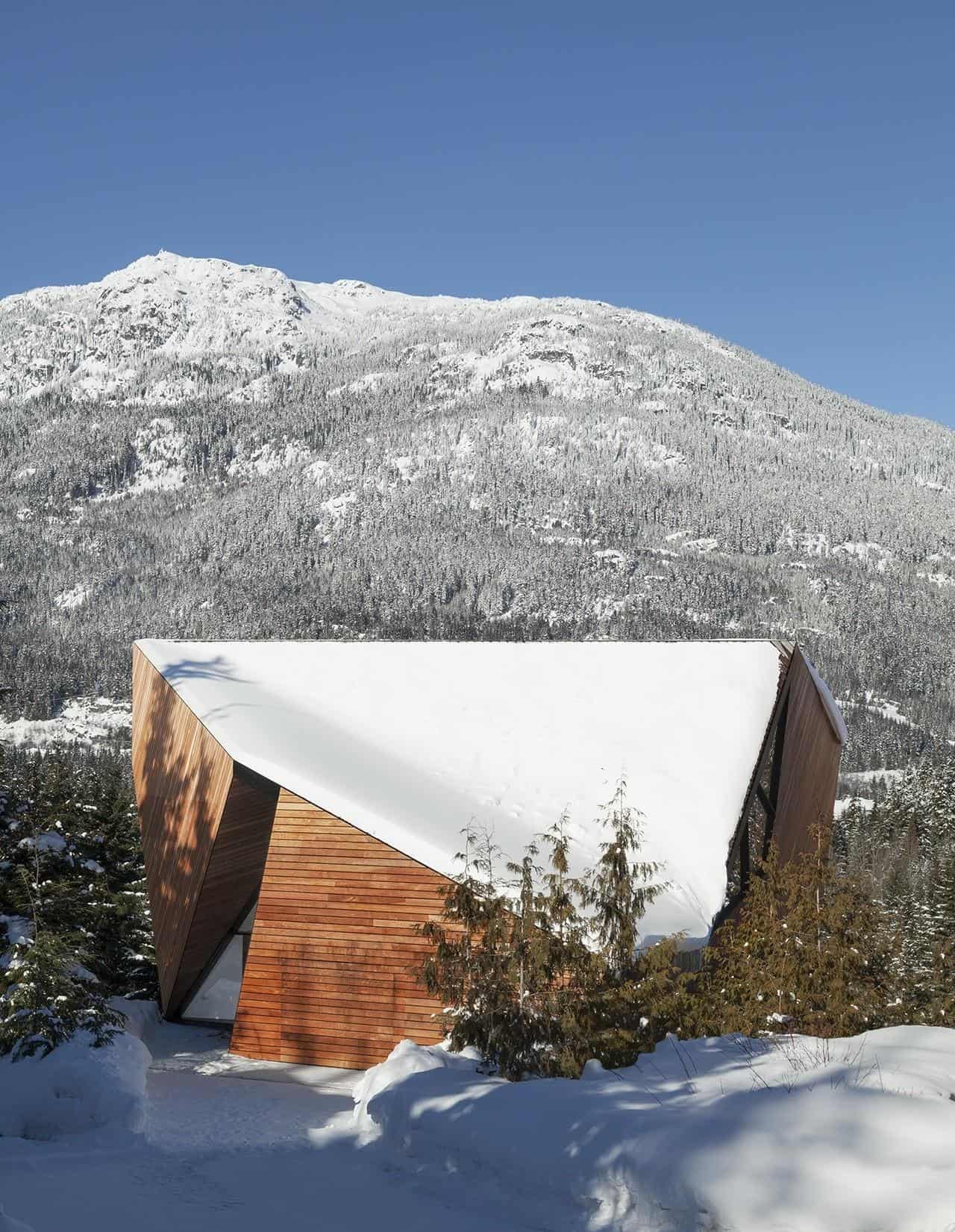
Construction of Hadaway House is a combination of concrete on the lower floor and composite steel and heavy timber framing on the upper levels. The thermal mass of the lower concrete dampens the temperature swings inside during the summer and winter, and in the summer the interior is further cooled and ventilated by drawing air from the lowest level on the north side, before venting it through the roof’s central rift.
Patkau Architects.
Photography by James Dow and Patkau Architects.
While Hadaway House features a large rock off to the side of the home, sometimes snowy climate homes incorporate large rocks into their outdoor plans and one such home even made a large glacial erratic rock a feature.
